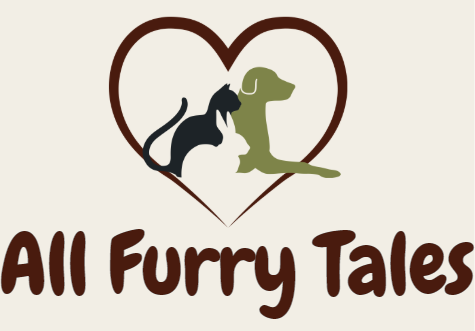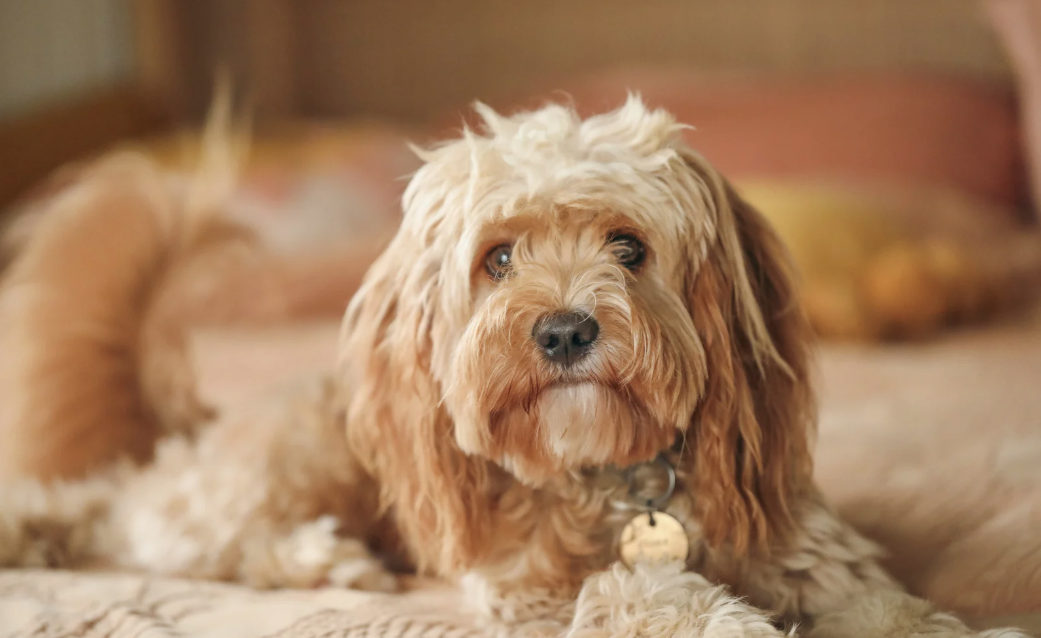Cavoodle

Cavoodle — The Heartwarming Family Companion
Among the many beloved designer breeds in the world, few melt hearts like the Cavoodle — also known as the Cavapoo. This delightful cross between the gentle Cavalier King Charles Spaniel and the intelligent Miniature or Toy Poodle combines the best of both parents: affection, intelligence, and an irresistibly cute face.
Bred for companionship rather than competition, Cavoodles are adored for their easygoing temperament, soft curls, and deep emotional connection with humans. They aren’t just pets — they’re family.
If you’re looking for a dog who adores cuddles, thrives in apartments, and gets along with everyone from toddlers to grandparents, the Cavoodle might just be your dream companion.
Breed Overview and History
The Cavoodle’s story begins in Australia during the late 1990s, when breeders sought to combine the gentle, affectionate nature of the Cavalier King Charles Spaniel with the intelligence and low-shedding coat of the Poodle. The result was a small, adaptable companion that quickly became one of Australia’s most popular family dogs — and has since captured hearts around the world.
Unlike working breeds, the Cavoodle’s mission was simple: to bring joy, comfort, and companionship to people’s homes. Their hypoallergenic tendencies also made them ideal for families sensitive to pet dander.
Over time, their loving nature and versatility made them favorites among city dwellers, retirees, and families alike. Whether playing fetch in a backyard or curling up beside you on the couch, the Cavoodle has proven to be the perfect modern-day companion.
Appearance and Physical Characteristics
Cavoodles are the perfect balance between elegance and playfulness. They’re small to medium in size, usually weighing 5 to 12 kilograms and standing 25 to 35 centimeters tall at the shoulder.
Their most distinctive feature is their soft, wavy to curly coat, inherited from the Poodle parent. It’s low-shedding, making them suitable for allergy-prone families. Coat colors vary widely — from golden, apricot, and cream to black, chocolate, or tricolor combinations.
Their round, expressive eyes and slightly rounded skull give them a permanently sweet, puppy-like face. Ears are long, floppy, and silky — perfect for gentle pats. The tail is feathered and carried cheerfully, often wagging at the smallest hint of attention.
Cavoodles are undeniably photogenic, and while they were bred for love, their aesthetic charm has made them stars of Instagram and family photo albums alike.
Temperament
- Affectionate, gentle, sociable, intelligent, playful
Size
- Small to Medium
Compatible With
- Families
- Children
- Singles
- Seniors, and
- Other pets
Coat Type and Colours
- Soft, wavy or curly coat
- Low to non-shedding
- Common colours: Apricot, Gold, Red, Cream, Black, Chocolate, Tri-colour, Blenheim
Energy Level
- Moderate
Origin
- Australia (cross between Cavalier King Charles Spaniel and Poodle)
Grooming Needs
- Moderate to high – regular brushing (2–3 times per week), professional grooming every 6–8 weeks
Lifespan
- 10 to 14 years
Cavoodle Personality
If the Border Collie is the Einstein of dogs, the Cavoodle is the therapist of the dog world — empathetic, affectionate, and always tuned into your mood.
They crave companionship above all. Cavoodles are happiest when surrounded by their people, whether you’re working at your desk, relaxing on the couch, or taking a walk. They adjust effortlessly to your pace and lifestyle.
Intelligence with Heart
Cavoodles inherit keen intelligence from their Poodle lineage, learning commands quickly and responding eagerly to praise. Their soft, people-pleasing nature means they prefer gentle guidance over firm correction.
With Family and Children
They are affectionate and tolerant, making them wonderful with children of all ages. They enjoy gentle play, cuddle sessions, and nap times in equal measure. Their patient temperament also makes them excellent first pets for young families.
With Other Pets
Cavoodles are social butterflies — they get along with other dogs, cats, and even small pets. Early socialization ensures they grow into confident, well-rounded companions.
Potential Challenges
Their loving nature can lead to separation anxiety if left alone for long periods. They’re not dogs for busy owners who work away from home all day. Regular walks, play sessions, and family time keep them emotionally balanced and content.
Behavioral Insights and Famous Examples
Cavoodles are masters of emotional connection. Studies show they’re especially attuned to human facial expressions and tone, responding with comforting gestures — a paw on your knee, a nuzzle, or a warm stare that says, “I’m here.”
- Therapy and Emotional Support Dogs: Cavoodles often serve as therapy animals in schools, nursing homes, and hospitals due to their gentle, intuitive personalities.
- Social Media Stars: Accounts like @cavoodlecharlie and @lifeofcavapoos showcase how playful and expressive this breed can be — from goofy zoomies to patient cuddles with toddlers.
- Family Favorite: Their calm nature makes them a go-to choice for first-time dog owners.
Mental Enrichment Matters
Though small, Cavoodles are thinkers. Keep them engaged with:
- Puzzle toys and snuffle mats
- Hide-and-seek games
- Short trick-training sessions
- Interactive playtime with the family
Mental stimulation prevents boredom and strengthens the human-dog bond.
Is the Cavoodle Right for You?
Ideal for:
- Families with children, retirees, apartment dwellers, and those seeking a loyal, low-shedding, emotionally sensitive pet.
Not Ideal for:
- People away from home for long hours or those seeking a guard dog — Cavoodles are lovers, not fighters.
If you want a companion who’ll greet you with enthusiasm, cuddle you during tough days, and never judge your Netflix marathons, the Cavoodle is the perfect choice.
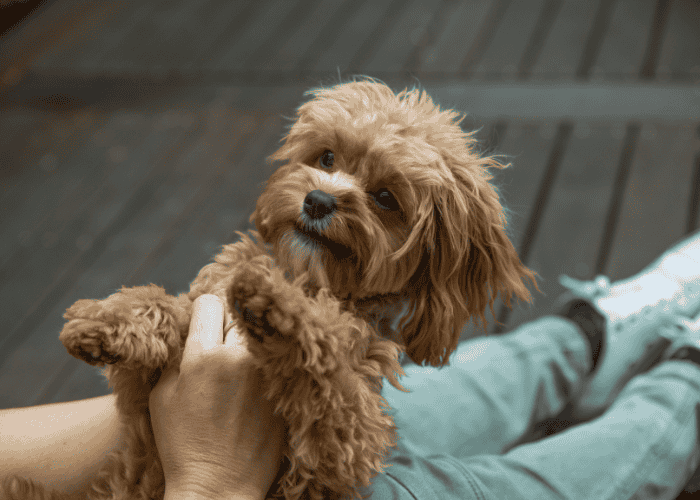
Training, Exercise and Mental Stimulation
Cavoodles love learning and pleasing their owners. Their intelligence means training is a joy rather than a chore.
Training Approach
Use positive reinforcement — treats, praise, and affection. They respond beautifully to encouragement and lose confidence if scolded. Keep sessions short (10–15 minutes), consistent, and fun. Early socialization ensures they remain calm around strangers and other pets.
Exercise Needs
Despite their small size, Cavoodles are active. They need around 45 to 60 minutes of daily exercise, which can include:
- Morning run or brisk walk (45 minutes)
- Evening fetch or frisbee session (30 minutes)
- Short obedience drills or trick training before bed (15 minutes)
They thrive on routine. Mental games like “find it” or “name your toy” can be added for variety.
A well-exercised Cavoodle is calm, content, and cuddly — the perfect home companion.
Feeding and Nutrition
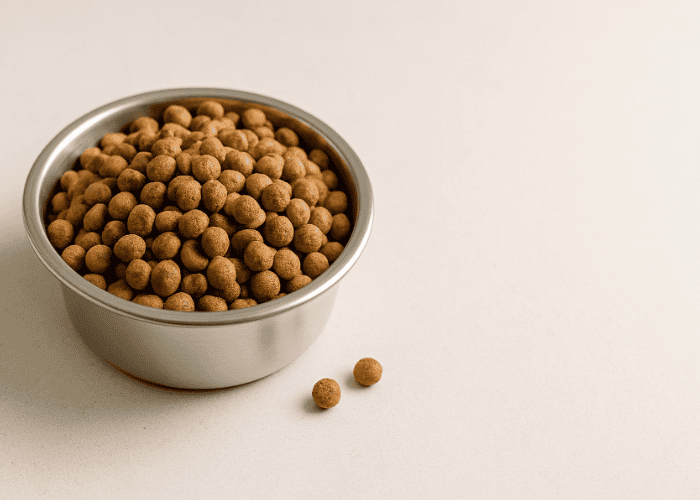
Cavoodles need a balanced diet that supports both their active energy and sensitive stomachs.
Choose high-quality dry or fresh food formulated for small-breed dogs. Ingredients should include lean proteins (chicken, fish, or lamb), healthy fats, and limited grains. Avoid artificial colors and fillers.
Most adults need 300–500 calories per day, depending on activity level. Puppies should have three small meals daily, while adults thrive on two meals.
Add a spoon of salmon oil or flaxseed oil for a shiny coat and skin health. Regular feeding times help maintain digestion and prevent begging behaviors.
Grooming and Coat Care
The Cavoodle’s coat is its crown — soft, fluffy, and irresistibly touchable.
Brush two to three times a week to prevent tangles and matting. During shedding seasons, increase to daily brushing. Use a slicker brush for curly coats or a pin brush for wavy coats.
Bathe your Cavoodle every 4–6 weeks with a mild, dog-safe shampoo. Keep their ears clean and dry, as floppy ears can trap moisture leading to infections. Trim nails monthly, brush teeth thrice a week, and check eyes for discharge.
Regular grooming isn’t just for looks — it’s bonding time.
- Brush 3–4 times per week to manage shedding
- Professional grooming every 6–8 weeks
- Regular teeth cleaning for oral health
- Check and clean ears to prevent irritation
- Grooming routine keeps Border Collies healthy, shiny, and comfortable
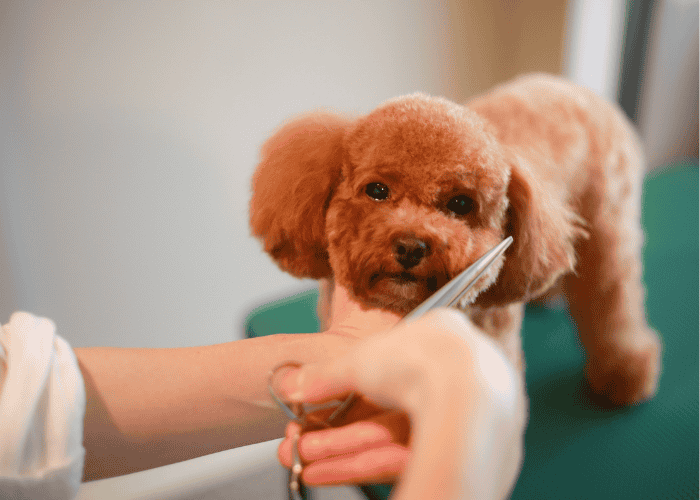
Health, Lifespan and Common Issues
Cavoodles are generally healthy, with an average lifespan of 12–15 years. However, like all hybrid breeds, they can inherit conditions from either parent line.
Common Health Concerns
- Mitral Valve Disease: Inherited from Cavalier lineage, affects heart function.
- Patellar Luxation: Knee cap instability common in small breeds.
- Ear Infections: Due to floppy ears; regular cleaning prevents buildup.
- Hip Dysplasia: Rare, but possible if overexercised while young.
- Progressive Retinal Atrophy (PRA): Eye disorder leading to vision loss.
Preventive Care and Lifespan
Schedule annual vet visits and vaccinations. Feed balanced meals, maintain healthy weight, and encourage daily activity.
Cavoodles live longest when mentally stimulated, socially engaged, and surrounded by love. Many reach 16+ years with proper care.
Living With a Cavoodle
Living with a Cavoodle is pure comfort. They love following you from room to room, resting on your lap while you read, or curling beside you at night.
They thrive on inclusion — whether joining family picnics or simply being part of household chatter. Because they adapt easily, they’re perfect for apartments and small homes, provided they get regular walks.
Expect bursts of playful zoomies, affectionate cuddles, and soulful eyes that seem to understand every word. A Cavoodle doesn’t just share your home — they fill it with warmth.
Owner Stories and Real-World Experiences
Our Cavoodle, Milo, curls beside my daughter every night — he’s her best friend and comfort blanket.– Lauren, Sydney
Bailey wakes me up every morning by tapping my arm with his paw. He’s gentle, loyal, and the heart of our family.– Mark, Brisbane
We live in an apartment, and our Cavoodle, Ruby, fits perfectly. She loves short walks and long naps on the couch.– Priya, Melbourne
Cavoodle vs Similar Breeds
- Moodle (Maltese × Poodle): Smaller, more vocal, requires extra grooming.
- Spoodle (Cocker Spaniel × Poodle): Slightly larger, more energetic.
- Toy Poodle: Purebred with tighter curls, higher maintenance.
- Cavalier King Charles Spaniel: More relaxed but heavier shedding.
For families seeking balance — affectionate temperament, moderate energy, and allergy-friendly coat — the Cavoodle wins hearts every time.
Frequently Asked Questions
Quick Reference Summary
If you’re skimming for a quick takeaway, here’s what to remember:
Breed Origin
Ideal Owners:
Grooming Routine
Life Expectancy
Temperament
Exercise Needs
Common Health Issues
Final Woof
The Cavoodle is everything a family could ask for in a pet — affectionate, intelligent, adaptable, and endlessly loving. Whether you live in a high-rise apartment or a suburban home, this gentle companion fills every corner with warmth and joy.
They don’t just share your life — they enhance it, turning ordinary days into moments of laughter, comfort, and connection.
If you’re looking for a lifelong friend who fits seamlessly into modern family life, the Cavoodle may be the most heartwarming decision you ever make.
